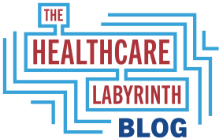Hollywood supposedly is addicted to them. More and more Americans are now trying GLP-1s for weight loss. What is happening here with GLP-1s is something repeated often in the drug world.
First, what is a GLP-1?
The drugs were introduced in the U.S. beginning in the mid-2000s and have been used for those with type 2 diabetes who were overweight. These are a class of drugs that perform much like a hormone called glucagon-like peptide 1. As blood sugars rise in the blood stream, the drugs stimulate the production of more insulin, which lowers blood sugar levels. This is essential for controlling type 2 diabetes. It’s not clear how the GLP-1 drugs lead to weight loss overall, although the drugs do appear to slow the movement of food through the digestive tract and make you feel fuller.
How did it become popular for weight loss?
Now let’s get into off-label use of drugs. Given what I said above about how the drug works, diabetics showed positive benefits of weight loss – some lost weight simply by taking the drug and others lost more weight by combining the drug with healthy eating and exercise.
As the impact on weight became more broadly known, doctors began prescribing these drugs for off-label use for weight loss. For example, Ozempic, one of the GLP-1s for diabetes, has become a popular drugs for weight loss in higher doses (the higher doses are needed to drive greater weight loss than seen just with normal doses for diabetes use). Over time, a few other drugs received approval for weight loss proper, including Wegovy.
Enter the marketing of brand drug makers. While they cannot market for the use of most of the drugs for weight-loss alone, subtle (or perhaps not so subtle) messages in ads for their use with diabetes spawned interest in using these drugs for weight-loss. Wegovy’s maker, Novo Nordisk, will now be able to connect the drug directly to weight loss.
Other uses
Today, there are about ten or so GLP-1s on the market, most for diabetes and a few for weight-loss. Very recently, Wegovy was approved for the use for those with cardiovascular disease in certain situations. Research on the drugs do show positive benefits in a number of areas – blood sugar control and heart disease reduction (as noted) as well as lower blood pressure, reduced stroke risk, and protection against kidney disease. Many people tend have multiple co-morbidities that tend to bring together diabetes, cardiovascular disease risks, and kidney impacts/disease.
In light of the Food and Drug Administration’s (FDA) approval of GLP-1 Wegovy for use in certain circumstances for people with cardiovascular disease, CVS Health’s Aetna, Elevance Health and Kaiser Permanente said they would cover the drug in Medicare. Elevance Health said that coverage will also be extended to people enrolled in its commercial plans. Other insurers are reviewing the FDA approval.
Costs
GLP-1s are expensive. Depending on the drug, they have retail prices of between $900 and $1,350 a month. With publicly available discounts, the drugs can be obtained for a monthly price in the $900s, with some lesser popular ones between $500 and $800. The Economist says that worldwide sales could reach $80 billion by the end of the decade.
The on-label and off-label use has meant rising costs in many areas, especially commercial and employer coverage. Because this coverage usually has more liberal rules, costs have spiraled, leading to some employers and commercial payers to end or severely restrict the use of the drug for weight-loss alone. At the same time, Cigna and its Big 3 pharmacy benefit manager (PBM) Express Scripts (ESI) announced that they would cap the price increases of such drugs for employers and others who utilize weight-loss programs in tandem with such drugs.
Even Medicare has seen the costs of GLP-1s rise dramatically. Medicare restricts the use of GLP-1s to use in specific circumstances that have been approved for the use in type 2 diabetes by the Food and Drug Administration (FDA). Similar restrictions apply in most Medicaid programs. The Centers for Medicare and Medicaid Services (CMS) just announced that coverage of these drugs have been approved for use in cardiovascular disease as outlined by the FDA (reduction of the risk of stroke or heart attack in people with cardiovascular disease and who are obese/overweight). To control overall costs, CMS also just said that prior authorization (PA), step therapy, and quantity limits may be used to scrutinize the use of any GLP-1. This is a major declaration in light of CMS’ terrible 2024 rule limiting PA overall on Part C (A and B) services.
In Medicare alone, Ozempic has risen to the sixth most costly drug at $4.6 million in 2022. Costs in Medicare have risen from $57 million in 2018 to $5.7 billion in 2022 just on three GLP-1s used for diabetes.
A new survey from Virta Health backs up the bleak cost picture. It says that 43% of health plan leaders are predicting 100% or more growth in GLP-1s for weight loss and obesity in 2024. More than half say GLP-1s will be a top 3 drug in 2024 in terms of spending. One fifth say they will be their most expensive drug class this year. Executives believe the media is misrepresenting GLP-1s and that lifestyle programs should be tried first.
Why are they so expensive?
The drugs are extremely effective and relatively safe.
Why are these drugs so expensive? Well, frankly because the brand drug makers can charge what they want and see a huge demand for the drugs for on-label and off-label use. Sen. Bernie Sanders, Chairman of the HELP Committee, recently pressed drug maker Novo Nordisk to reduce the price of two such GLP-1 drugs when research found that production costs are said to be under $5 per weekly administration. Sanders says Novo Nordisk charges Americans nearly $1,000 a month for the drug, while the same exact product can be purchased for $155 a month in Canada and just $59 in Germany. Remember these drugs have been around for a number of years now. As such, Sanders wants Novo Nordisk and presumably other GLP-1 drug makers to reduce prices.
CBO says these drugs don’t save in the short run
Broader use in Medicare Part D and Medicaid will be stymied by the fact that the Congressional Budget Office (CBO) said allowing Medicare coverage of anti-obesity drugs would cost the government more than it would save in the first 10 years. CBO says it can find no conclusive evidence that such drugs save in other areas right now. CBO takes a very strict short term and static view of things in their estimation.
So what are the benefits and risks
One of my favorite magazines, The Economist, heralded the advent of GLP-1s in both a recent editorial and news article. I am afraid that the newspaper (as it calls itself) may have gotten caught up in its usual free market and innovation frenzy. Some of what it says is true or may be true in the future. At the same time, from reading its coverage of GLP-1s, a reader would think there are no drawbacks to the medication. That is concerning for such an informative magazine.
Among its findings:
- The drugs are extremely effective and relatively safe.
- They can be effect against the obesity epidemic worldwide. People lose 15% to 20% of their body weight.
- They reduce heart attacks, kidney disease, and even Alzheimer’s. This is backed up by other studies
- Market caps of GLP-1 producers are soaring.
- Drugs are in short supply but may be widely available soon at lower prices and a duopoly (where tw makers dominate the market) will be avoided.
- Drug makers are seeking to outdo one another in innovation on GLP-1s, which will make these drugs more effective, safe, and cheaper.
- There are shortages of both ingredients and the needle that administers the medication, but leading firms are hard at work to close the gap.
While the appropriate use of GLP-1s for certain disease states seems well-documented, there is a growing controversy brewing over the risks vs. benefits of GLP-1s for weight loss. In a recent blog in The Healthcare Blog, authors lay out many unknowns and cautions. It is clearly the right move. The authors told us:
- Almost 70% of patients stopped GLP-1 treatment less than one year after starting. This comes from a great Prime/MagellanRx analysis.
- The same study from Prime/MagellanRx found no healthcare cost reduction in the first year for individuals taking GLP-1s without diabetes but with obesity, prediabetes, and/or BMI ≥ 30. Costs went up $7,727. Again, adherence was low as noted above. With those who were adherent, the increase in costs were even higher, double the prior year.
- Almost two-thirds of lost weight was gained back when individuals were switched to a placebo. It points to the need for lifetime use to be effective unless coupled with other treatments. The drug works best with lifestyle changes.
- There are suspected unknown long-term effects of the drug. Some studies already show some impacts, including pancreatitis for those with diabetes. Note that dosages for pure weight-loss are higher than with diabetes.
- There are limitations in existing published studies and the public is not getting the full picture.
- A cautious approach on GLP-1 is needed and widespread adoption is premature.
- Fundamental questions remain about who should take them and at what doses. Long-term health impacts could be more concerning than actual costs.
Some of the above does point to why Cigna believes other interventions, such as weight-loss programs, are essential. Further, I would note that a recent 2024 study posted below comes to a different conclusion, arguing that correctly engaged, those who stop taking GLP-1s can avoid negative effects on glycemia and body weight. This by no means overrules the Prime/MagellanRx findings, though.
None of the cautionary tales above seems to matter to brand drug makers. They are not particularly worried about long-term effects of drugs. They want to pass their tests and get to market to earn money. They will deal with any negative impacts later. The opioid epidemic is proof positive of that. The Food and Drug Administration (FDA) is little better. It has a broken system and a revolving door, which has meant a lack of true oversight and thorough testing of many drugs.
In the end, innovation in the drug world certainly helps control disease, as long as we are reasonably sure of safety and effectiveness. Adopting such treatments too quickly and for off-label use have their risks. The verdict right now is out on these drugs but ongoing innovation will certainly help.
The real issue is the price here in the United States. The vast difference in price between America and other developed world countries shows brand drug makers for the greedy profiteers they are – many of them foreign based to boot. It would be far more palatable to endorse the creativity of these firms and be open to greater adoption if prices were not as much as ten times other countries on a net base and seventeen times on a gross one.
Sources and additional reading:
CMS and some payers allow broader use of GLP-1s: https://thehill.com/policy/healthcare/4548098-medicare-obesity-drugs-weight-loss/ and https://thehill.com/policy/healthcare/4548098-medicare-obesity-drugs-weight-loss/ and https://www.fiercehealthcare.com/payers/wsj-cms-broadens-part-d-coverage-obesity-drugs
CMS allows utilization controls in Medicare: https://insidehealthpolicy.com/inside-drug-pricing-daily-news/cms-step-therapy-quantity-limits-can-be-used-wegovy-heart-disease
GLP-1 costs in Medicare skyrocketing: https://www.kff.org/health-costs/press-release/gross-medicare-spending-on-ozempic-and-other-glp-1s-is-already-skyrocketing-even-though-medicare-cannot-cover-the-drugs-for-weight-loss/
CBO says GLP-1s won’t reduce costs in coming decade: https://insidehealthpolicy.com/daily-news/cbo-questions-unanswered-glp-1-s-potential-long-term-savings
Other costs: https://www.fiercehealthcare.com/sponsored/demand-glp-1s-growing-faster-expected
Cigna’s cost limits: https://www.healthcaredive.com/news/cigna-glp-1-cost-cap-employers-pbm/709597/
Sanders calls for price reductions and other articles on costs: https://thehill.com/policy/healthcare/4560323-sanders-calls-for-novo-nordisk-slash-ozempic-wegovy-prices/ and https://www.biospace.com/article/high-costs-of-glp-1-drugs-fuel-debate-/#:~:text=For%20example%2C%20Novo%20Nordisk’s,%241%2C000%20for%20a%20month’s%20supply and https://www.beckershospitalreview.com/pharmacy/in-us-glp-1s-cost-hundreds-more-than-similar-nations.html
The Economist views on the future of weight-loss drugs: https://www.economist.com/leaders/2024/03/07/a-frenzy-of-innovation-in-obesity-drugs-is-under-way and https://www.economist.com/business/2024/03/04/the-battle-over-the-trillion-dollar-weight-loss-bonanza
Other studies find benefits: https://www.managedhealthcareexecutive.com/view/ozempic-reduces-kidney-disease-progression-cardiovascular-events-by-24-
The Healthcare Blog cautions: https://thehealthcareblog.com/blog/2024/03/13/what-could-we-do-if-glp-1-weight-loss-drugs-were-free-would-our-obesity-epidemic-be-solved-for-good/
Prime/MagellanRx findings: https://www.primetherapeutics.com/wp-content/uploads/2023/07/GLP-1a-obesity-treatment-1st-year-cost-effectiveness-study-abstract-FINAL-7-11.pdf
#weightlossdrugs #medicare #partd #healthplans #coverage #brandrugmakers
— Marc S. Ryan





